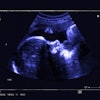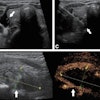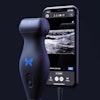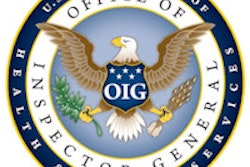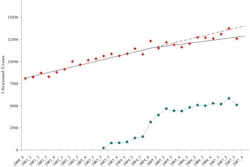Could ultrasound be the next front in the war over inappropriate imaging utilization? Maybe so, following a report released this month by the U.S. Department of Health and Human Services' Office of Inspector General (OIG) that found indications that some reimbursement claims for ultrasound services might not be legitimate.
The OIG recently examined 2007 Medicare Part B spending on the modality, and expressed concern that nearly one in five ultrasound claims nationwide had characteristics that raised questions about its appropriateness. In addition, the OIG found that 20 counties accounted for 16% of the nation's $2 billion in ultrasound spending.
The OIG analyzed Medicare Part B claims data for ultrasound to describe its utilization in high-use counties, to compare utilization with other counties, and to identify claims with questionable characteristics.
From the data analysis, 20 counties were identified as the highest users of ultrasound covered under Medicare Part B: Macomb, MI; Suffolk, NY; Nassau, NY; Queens, NY; Kings, NY; Richmond, NY; Union, NJ; Middlesex, NJ; Ocean, NJ; Indian River, FL; Saint Lucie, FL; Palm Beach, FL; Broward, FL; Miami-Dade, FL; Charlotte, FL; De Soto, FL; Sarasota, FL; Marion, FL; Walker, AL; and Willacy, TX.
These counties generated $336 million, or 16%, of the total ultrasound spending, despite having only 6% of Medicare beneficiaries, according to the OIG. These counties also contributed 2.3 million scans, or 13%, of the 17 million ultrasound scans covered by Part B in 2007.
In these high-use counties, an average of $171 was spent on ultrasound for every Medicare beneficiary, compared with $55 in the rest of the country. Average expenditures ranged from $123 in Walker County, AL, to $235 in Kings County, NY.
Also, 36% of beneficiaries in these counties received ultrasound services in 2007, compared with only 18% in the rest of the U.S., according to the OIG. Percentages ranged from 31% in Union County, NJ, to 42% in Miami-Dade County and Charlotte County in Florida.
Beneficiaries who received ultrasound services in these communities received an average of 3.2 scans, compared with 2.5 scans for beneficiaries around the country. Also, the ratio of ultrasound providers in the high-use counties was one for every 90 beneficiaries, compared with one provider for every 329 beneficiaries in the rest of the country.
Questionable claims
The OIG also analyzed its county-level file and national claims file to compare utilization of the high-use counties with other counties. After consulting with a certified fraud examiner and a registered sonographer at a Medicare Program Safeguard Contractor (PSC), the OIG said it identified five characteristics that may indicate questionable ultrasound claims:
- The absence of a prior service claim from the doctor who ordered the ultrasound service.
- Questionable use of ultrasound billing codes, such as suspect combinations of ultrasound services billed for the same beneficiary on the same day by the same provider, or specific procedures that are not effective in adults.
- Instances of more than five ultrasound services provided to the same beneficiary on the same day by the same provider.
- Beneficiaries who had ultrasound services billed to them by more than five providers in 2007.
- Missing or invalid data in the claim fields that identify the doctor who ordered the service.
The OIG acknowledged that these five characteristics are not intended to be a comprehensive set of markers for identifying questionable claims.
"Also, although the presence of such characteristics raises questions about the appropriateness of claims, it does not necessarily mean that such claims are inappropriate or fraudulent," the OIG wrote. "We did not assess compliance of ultrasound claims with Medicare billing requirements or the medical necessity of their underlying services."
Across the U.S., 3.2 million, or 19%, of Part B ultrasound claims had one or more of the five characteristics that may indicate questionable ultrasound claims, according to the OIG. These claims tallied $403 million, or 19%, of the $2.1 billion spent on ultrasound in 2007.
The lack of a service claim by the ordering doctor was the most common questionable characteristic, overall, seen in nearly 17% of Part B ultrasound claims, the OIG said.
"For these claims, the ordering doctor did not bill Part B for treating the beneficiary, such as for an office visit, any time in 2006 or 2007 up to and including the day of the ultrasound service," the OIG said. "These claims account for $356 million in Part B charges. Ultrasound claims without prior service claims raise questions because they suggest that the doctor who ordered the service may never have seen the beneficiary."
In other findings, the OIG determined that certain providers billed for a large number of ultrasound claims with questionable characteristics.
"Although most of the 104,598 providers who billed for ultrasound billed 20 or fewer claims with questionable characteristics, 672 each billed Part B for 500 or more such claims in 2007," the OIG wrote. "On average, about half of the ultrasound claims billed in 2007 by these providers had questionable characteristics associated with them."
These questionable claims accounted for 588,534 of the 1,412,459 claims billed to Part B, equating to $81 million of the $192 million in allowed charges for ultrasound, the OIG said.
OIG recommendations
Based on its report, the OIG is recommending that the Centers for Medicare and Medicaid Services (CMS) monitor ultrasound claims data to detect questionable claims.
"This would reduce Medicare's vulnerability to questionable claims for ultrasound services by enabling CMS to develop claims processing edits that flag them for review prior to payment," the OIG wrote.
Also, CMS should take action when providers bill for high numbers of questionable claims for ultrasound services, according to the OIG.
"When its monitoring identifies providers that bill for large numbers of questionable claims, CMS should review their claims to ensure that they are legitimate prior to payment," the OIG wrote. "If CMS determines that such providers submit fraudulent claims, it should take steps to revoke their Medicare billing numbers."
In written comments, CMS has concurred with both recommendations, the OIG said.
"In response to our recommendations, CMS will share our findings with the Medicare Administrative Contractors for potential additional prepay edits and prepay medical review," the OIG said. "CMS also stated that it will forward questionable claims identified by this report to its Recovery Audit Contractors for them to consider in prioritizing areas for postpayment review. Finally, CMS stated that it will share with its program integrity contractors for appropriate follow-up information on providers that OIG provides."
By Erik L. Ridley
AuntMinnie.com staff writer
July 23, 2009
Related Reading
Medicare's equipment utilization rate: What it means for radiologists, July 14, 2009
Radiology faces declining share of musculoskeletal ultrasound, January 20, 2009
CT utilization spikes among nonradiologists, December 17, 2008
Stalking self-referral: OIG reports on MRI services paid under MPFS, October 15, 2008
Study: Picking US over MRI for MSK imaging could save billions, March 6, 2008
Copyright © 2009 AuntMinnie.com

